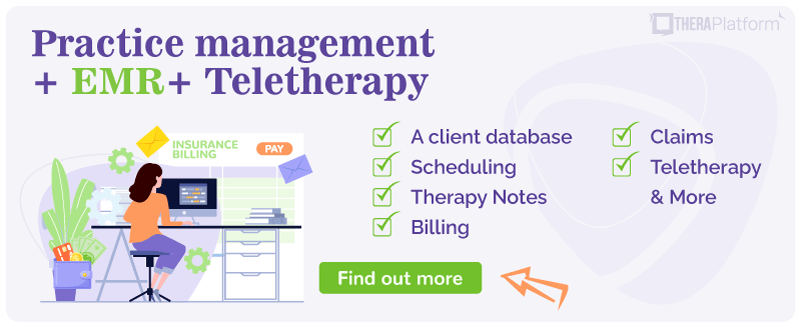Telehealth consent form

A telehealth consent form is an intake document that outlines to clients how electronic communication or video conferencing will be utilized as a provision of care for therapy treatment. A telehealth consent form is required if you’re expanding your services to offer teletherapy and must be signed by the client.
→ Click Here to Download My Free Telehealth Worksheets and Checklists [Download Now]
Before embarking on a telehealth practice though, it’s advisable to understand telehealth consent form requirements as they relate to location, technology and delivery. Understanding your responsibilities as a clinician both legally and ethically can protect you and your clients and help you to serve clients better.
Location and the telehealth consent form
One of the great advantages of offering telehealth services is that you can expand beyond your immediate local service area. Which is great! But it raises a few questions. For example, did you know that in some states you have to be licensed to practice in BOTH the state you live in AND the state the client is in? It may also necessitate different requirements for your telehealth consent form. Check in with your state’s and your client’s state office of professions website or office to learn more.
Working with international clients can be a little precarious when it comes to telehealth consent forms as well. What if your new client lives in another country (say Canada or Mexico)? Does the licensure requirement still apply? What are the mental health laws in those countries regarding licensure and informed consent? Knowing your mental health law and responsibilities regarding informed consent is a win. (‘I don’t know’ likely won’t fly with a disciplinary board.)
Watch this video to find out more about launching teletherapy in your practice
Sign up for My Free Teletherapy E-Course
Technology and telehealth consent forms
When it comes to clients and telehealth consent forms, your forms should provide the necessary information for a client to make an informed decision about care. In fact, if you’re in practice already, you probably have a consent form and you might be thinking that you can use this standard informed consent. If it fully addresses telehealth, well … then … maybe.
If your form doesn’t address telehealth, providers have an ethical (and maybe legal) obligation to make sure clients fully understand what therapy in a virtual setting is and is not.
The unique aspects of telehealth such as teletherapy or telemental health should be in your informed telehealth consent document including:
- The use of technology
- Protection of PHI and confidentiality
- Internet security
- Connectivity and more
With this in mind, some therapists make one big informed consent for in-office and telehealth to sign. Others have separate consents for in-person clients and telehealth clients. How you structure your consent is up to you, your board requirements and the best fit for your clients.

Telehealth consent form intake
When a client comes into an office to sign a standard form, it’s a pretty straightforward affair. They likely complete the form with a pen and hand it to you (or another person) on a clipboard. Their information is then entered in a contact list or client record. (With your best attempts at reading their illegible handwriting.)
A telehealth consent form works a little differently. Even if you have adapted your telehealth consent form for location and technology, you still need to send and receive it. (And, no, sorry, verbal consents are not an acceptable workaround.)
Some providers may turn to email, but most email services are not HIPAA compliant. Also, you’ll need to commit time to scanning and returning forms, and copying and filing those forms to a chart or EHR.
Start 30-day Free Trial and explore TheraPlatform. HIPAA Compliant Video and Practice Management Software for Therapists.
Document signing services are also an option but some therapists find them a bit pricey for small practices. There’s still the time suck of navigating between platforms – telemental health, EHR, document signing, claims – that may not play well together. That is time you can never get back.
Another option for sending and receiving a telehealth consent form is using an all-in-one teletherapy, EHR and practice management tool that helps you manage your practice forms efficiently. Less time chasing paperwork means more time helping your clients. That’s a win for everyone.
At the end of the day, you have to make sure that any consents you’re required to have are informative, accessible and signed by your client. You may never have to produce them but they are there for a reason and you can rest assured knowing your client is fully informed and that you are maintaining the highest standards for care in your practice.

Resources
TheraPlatform is an all-in-one EHR, practice management, and teletherapy software built for therapists to help them save time on admin tasks. It offers a 30-day risk-free trial with no credit card required and supports mental and behavioral health, SLPs, OTs, and PTs in group and solo practices.
More resources
- Therapy resources and worksheets
- Therapy private practice courses
- Ultimate teletherapy ebook
- The Ultimate Insurance Billing Guide for Therapists
- The Ultimate Guide to Starting a Private Therapy Practice
- Insurance billing 101
- Practice management tools



